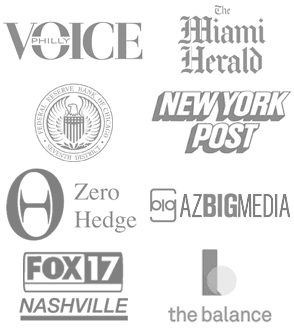The homebuying process with a FHA loan during a Chapter 13 bankruptcy can seem daunting, but it’s not impossible. Chapter 13 bankruptcy, often called a “wage earner’s plan,” allows individuals with regular income to restructure debts into a manageable repayment plan, typically over three to five years. For those looking to purchase a home during this period, the Federal Housing Administration offers a pathway through its insured loan program, known for flexible credit and down payment requirements. Let’s consider whether you can get approved an FHA loan while in Chapter 13 bankruptcy in 2025, detailing eligibility criteria, lender requirements, and practical considerations.
Can I Get an FHA Loan While in Chapter 13 Bankruptcy?
Chapter 13 bankruptcy helps debtors repay creditors under court supervision while protecting assets like a home from foreclosure.
Unlike Chapter 7, which liquidates assets, Chapter 13 focuses on reorganization, making it possible to maintain financial stability during the repayment period.
The FHA, a government agency, insures mortgages to encourage lending to borrowers with lower credit scores or limited funds, offering loans with down payments as low as 3.5% and credit scores starting at 580.
The FHA’s guidelines allow borrowers in Chapter 13 bankruptcy to apply for a mortgage under specific conditions, unlike most conventional loans, which typically require bankruptcy discharge. This flexibility makes FHA loan approvals an exciting opportunity for those actively managing their repayment plan.
FHA Loan Eligibility During Chapter 13 Bankruptcy
To qualify for an FHA loan while in Chapter 13 bankruptcy in 2025, borrowers must meet both FHA and lender-specific requirements:
1. Court Approval
The bankruptcy court must approve the mortgage application. This involves:
- Providing a written request to the court or trustee outlining the loan purpose (e.g., home purchase).
- Demonstrating that the new mortgage payment won’t jeopardize the Chapter 13 repayment plan.
- Obtaining a court order or trustee letter authorizing the loan.
2. Timely Repayment History
Borrowers must have made at least 12 consecutive on-time payments to the Chapter 13 trustee. Late payments can disqualify the application, as FHA mortgage lenders and the HUD require proof of financial responsibility post-filing.
3. Credit Score
FHA loans require:
- A minimum credit score of 580 for a 3.5% down payment.
- A score of 500-579 for a 10% down payment, though many lenders impose a 620 minimum due to risk. Bankruptcy often lowers credit scores, but consistent Chapter 13 payments can improve scores over time. The Federal Housing Administration does support bad credit FHA loans if the borrower can demonstrate strong compensating factors, such as income and savings.
4. Debt-to-Income (DTI) Ratio
The FHA caps the DTI ratio at 43% (housing and other debts divided by gross monthly income), though some FHA lenders allow up to 50% with compensating factors like strong savings or employment history. The new mortgage payment must fit within the Chapter 13 plan’s budget.
5. Employment and Income
Borrowers need:
- Stable employment or income for at least two years (self-employment income is acceptable with documentation).
- Sufficient income to cover the mortgage, existing debts, and Chapter 13 plan payments.
6. Down Payment and Closing Costs
FHA loans require a 3.5% down payment (e.g., $7,000 for a $200,000 home), which can come from savings, gifts, or approved assistance programs. Closing costs (2-5% of the loan amount) can sometimes be rolled into the loan or covered by seller concessions (up to 6% of the purchase price).
7. Manual Underwriting
FHA loans during Chapter 13 often require manual underwriting, as automated systems may flag the bankruptcy. FHA Lenders review:
- Payment history on the Chapter 13 plan.
- Non-traditional credit (e.g., utility or rent payments) if credit history is limited.
- Explanations for derogatory credit events before bankruptcy.
- Find the best lenders for chapter 13 bankruptcy.
Additional Considerations for 2025
Market and Economic Factors
In 2025, FHA loan interest rates average 6.5% for 30-year fixed mortgages (per Bankrate, July 2025), slightly below conventional rates (6.8%). Home prices have risen 2% nationally (National Association of Realtors), making affordability a challenge. Borrowers in Chapter 13 must ensure the home price aligns with their budget and repayment plan.
Lender Overlays
FHA loan requirements may vary depending on the bank’s lending overlays. While FHA guidelines are lenient, lenders often impose stricter “overlays,” such as:
- Higher credit score minimums (e.g., 640).
- Lower DTI caps (e.g., 40%).
- Additional reserves (e.g., two months of mortgage payments in savings). Shopping multiple lenders, including FHA-approved credit unions or online platforms, increases approval chances.
Post-Bankruptcy Plan Impact
Taking on a mortgage during Chapter 13 doesn’t typically alter the repayment plan, as the court approves the loan based on affordability. However, borrowers must avoid new debt outside the plan to maintain compliance.
Benefits and Risks
Benefits
- Homeownership Opportunity: Allows buying a home without waiting for bankruptcy discharge (3-5 years).
- Low Down Payment: 3.5% is accessible for cash-strapped borrowers.
- Flexible Credit: Accommodates lower scores and recent bankruptcy.
- Stable Housing: Owning a home can provide long-term financial stability.
Risks
- Higher Rates: Bankruptcy may lead to slightly higher rates than for non-bankrupt borrowers.
- Foreclosure Risk: Missing mortgage or Chapter 13 payments could jeopardize the home.
- Court Delays: Obtaining court approval can take weeks, slowing the homebuying process.
- Limited Lender Options: Not all FHA lenders work with active Chapter 13 borrowers.
Case Study 1: Single Parent Buying a Starter Home
Profile: Maria, 35, single mother, Charlotte, NC
Situation: Maria filed for Chapter 13 bankruptcy in 2023 after medical debt accumulated. She’s 18 months into her five-year plan, making $1,200 monthly trustee payments on time. Her credit score is 620, income is $4,500/month (retail manager), and DTI is 38%. She wants to buy a $220,000 home to provide stability for her daughter.
Process: Maria applies for an FHA loan with a local credit union. She submits:
- A letter to the bankruptcy court requesting loan approval.
- Proof of 18 months of on-time trustee payments.
- Two years of employment verification. The court approves, confirming the $1,452 monthly mortgage (6.5% rate, 3.5% down) fits her plan. The lender requires manual underwriting, accepting her rent payment history as credit evidence. Maria uses a $7,700 down payment from savings and a gift, with 3% seller concessions ($6,600) covering closing costs.
Outcome: Maria secures the loan and moves into her home. The fixed mortgage payment aligns with her budget, and homeownership boosts her financial recovery.
Lesson: Timely Chapter 13 payments and court approval enable FHA loans for borrowers with moderate credit and stable income.
Case Study 2: Self-Employed Borrower Relocating
Profile: Jamal, 42, self-employed mechanic, Riverside, CA
Situation: Jamal entered Chapter 13 in 2022 to manage business debts. He’s 24 months into a three-year plan, paying $900/month to the trustee without misses. His credit score is 590, income averages $5,000/month (verified by bank statements), and DTI is 45%. He seeks a $250,000 home to relocate for better business opportunities.
Process: Jamal approaches an online FHA lender specializing in bankruptcy cases. He provides:
- Court approval after showing the $1,750 mortgage (6.7% rate, 10% down) won’t disrupt his plan.
- 24 months of trustee payment records.
- 12 months of bank statements for income. His 590 score requires a 10% down payment ($25,000), funded by savings. The lender uses manual underwriting, approving based on consistent self-employment income and no late payments post-bankruptcy. Seller concessions cover $5,000 of closing costs.
Outcome: Jamal buys the home, leveraging FHA’s flexibility for lower scores. The move enhances his business, and he continues his Chapter 13 plan successfully.
Lesson: Self-employed borrowers with lower credit can qualify with sufficient down payments and strong repayment histories.
Steps to Secure an FHA Loan in Chapter 13
- Verify Eligibility: Confirm at least 12 months of on-time Chapter 13 payments and a credit score of 580+ (or 500+ with 10% down).
- Contact the Bankruptcy Trustee: Request permission to apply for a mortgage, providing loan details and budget impact.
- Shop FHA Lenders: Compare at least three FHA-approved lenders, focusing on those experienced with Chapter 13 cases.
- Gather Documentation: Prepare trustee payment records, income verification, and a letter explaining the bankruptcy cause.
- Calculate Affordability: Use a mortgage calculator to ensure the payment fits within DTI and Chapter 13 obligations.
- Work with a Realtor: Partner with an agent familiar with FHA loans to find homes within budget and negotiate seller concessions.
- Submit Application: Apply with the lender, requesting manual underwriting if needed, and provide court approval promptly.
2025 Market Considerations with FHA Loans
In 2025, FHA loans remain attractive due to:
- Lower Rates: At 6.5%, FHA rates are competitive, especially for borrowers in bankruptcy.
- Stable Home Prices: A 2% price increase (NAR) supports appraisals but requires careful budgeting.
- Lender Competition: Online lenders and credit unions offer flexible terms, with some waiving origination fees for FHA borrowers. However, rising closing costs (averaging $6,000-$12,000 for a $200,000-$300,000 loan) and potential rate hikes later in 2025 (if inflation persists) necessitate quick action.
Alternatives to FHA Loans
If an FHA loan isn’t feasible, consider:
- VA Loans: For eligible veterans in Chapter 13, VA loans allow 100% LTV with court approval and 12 months of on-time payments.
- USDA Loans: For rural buyers, USDA loans offer 100% financing but require similar bankruptcy conditions.
- Waiting for Discharge: Completing the Chapter 13 plan (2-4 years post-filing) opens conventional loan options with better rates.
Securing an FHA loan during Chapter 13 bankruptcy in 2025 is achievable with court approval, 12 months of on-time trustee payments, a credit score of 580+ (or 500+ with 10% down), and a DTI below 43%. The case studies of Maria and Jamal demonstrate how borrowers with stable income and diligent repayment can become homeowners despite bankruptcy. While FHA’s flexibility is a boon, borrowers must navigate lender overlays, court processes, and financial risks. By working with experienced lenders, consulting trustees, and carefully budgeting, those in Chapter 13 can leverage FHA loans to achieve homeownership, paving the way for long-term financial recovery

